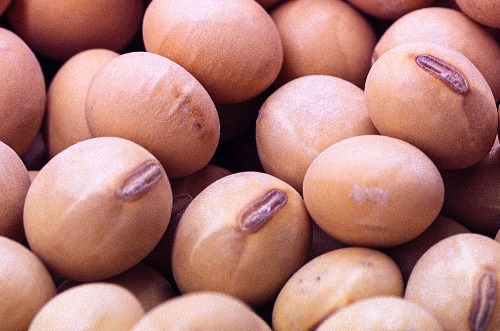Argentine Soybean Prices at a Record High

Tridge’s wholesale price of soybean in Argentina reported an increase of 38% MoM to ARS 89.11/kg (USD 0.53/kg) in the first week of December. The price set a record as the highest in 2022. There are various factors that prompted the price to increase, such as the new soybean exchange rate, higher Chinese demand, and prolonged drought that has delayed Argentine soybean crops for 2022/23 marketing year.
New Argentine Soybean Exchange Rate Increases Sales
According to the previous analysis, Argentine soybean prices rose in September due to the government's soybean exchange rate policy, which stimulated soybean exports. Argentina applied the soybean exchange rate differently than the official rate. The soybean exchange rate allows farmers to sell at better and higher prices of soybean in pesos. Instead of selling soy products for the tightly-controlled official rate of around 139 pesos per dollar at that time, producers received a much higher 200 pesos, making it more competitive for the producers to sell soybean. Argentina sold 13.7 million mt of soybean worth USD 8.1 billion under the September soybean exchange rate regulation.
In late November, Argentina announced a reform of the soybean exchange to increase soybean exports. The new exchange rate is more favorable to 230 pesos per US dollar. The current official exchange rate at 165 pesos per US dollar. This exchange rate for US dollars is effective from 28th November until the end of 2022 to promote soybean sales to domestic crushers and year-end soybean exports.
China Eases Covid-19 Restrictions Boost Demand
China is the top soybean importer in the global market accounting for USD 53.5 billion in 2021. Brazil is the major supplier, followed by the US and Argentina. Chinese demand for soybeans is projected to recover as the relaxation of COVID-19 restrictions boosts demand. The latest Argentine soybean exchange enhances price competitiveness for US soybean before the shift in supply begins from February to the Brazilian new crop.
China's soybean demand for January shipment is expected at 5.8 million mt and currently, 30% fulfilled. For the new soybean exchange program, China is anticipated to purchase 1 million to 1.5 million mt of soybeans from Argentina to increase their shipment in December and January.
Drought Delays Argentine Soybean Crops
Argentina’s soybean planting for the 2022/23 cycle is facing severe delays compared to last year as the country endures a prolonged drought and expects only scant rainfall in the near term. The current season’s planting area is forecast at 16.7 million hectares, slightly above last season’s 16.3 million ha. So far just 19.4% of the area has been planted, 20% YoY behind compared to a year ago. The lack of moisture and the absence of short-term rainfall will continue to limit Argentine soybean production in MY 2022/23. It is reported that Argentina is not expecting a return to normal rainfall patterns until the first quarter of 2023.
The latest soybean exchange program anticipates securing USD 3 billion in soybean exports. High demand and delayed production will take price trends going upward in the near term. In addition to the soybean MY 2022/23 prospects, it is likely Argentine farmers will have low soybean inventories in 2023.



